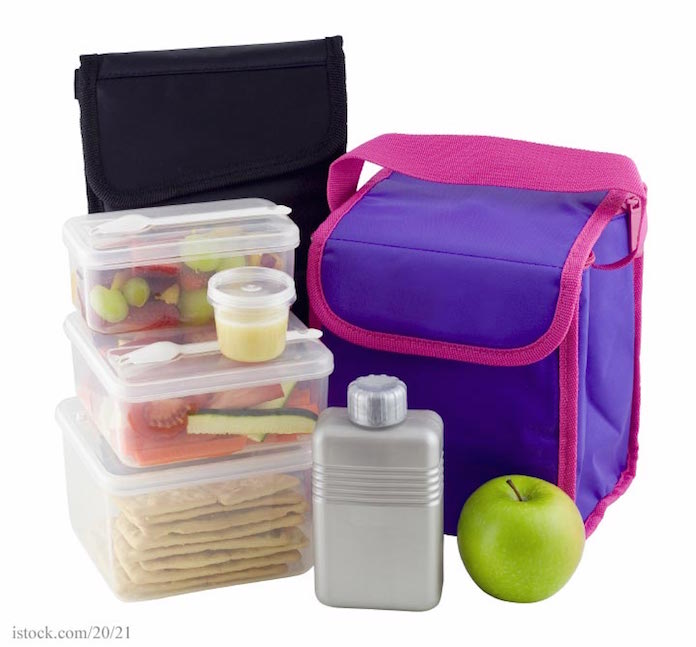It’s back to school time, and that means kids are going to be bringing bag lunches to school. Did you know that if those bags contain perishable foods, they must be handled and stored properly? The USDA has tips to help you keep your child safe.

Harmful bacteria, such as Salmonella, E. coli, and Listeria monocytogenes, multiply quickly in the Danger Zone temperature range of 40 °F and 140°F; that includes room temperature. Perishable foods that are held without an ice source, or without refrigeration, won’t stay safe to eat for long. So here’s what to do.
First, all perishable foods, such as meat, poultry, fish, and eggs, must be kept cold at all times. When you’re at the store, buy those foods last, go home immediately, and refrigerate them immediately. No perishable food should be outside of refrigeration longer than 2 hours.
Make sure you wash your hands with soap and water before handling and preparing foods. Wash cutting boards, dishes, utensils, and countertops with hot soapy water after preparing each food item and before starting the next.
Don’t cross contaminate! Bacteria from raw meat juices can spread throughout the kitchen, contaminating cutting boards and surfaces. Always use a clean cutting board. Be careful about juices and wipe up drips and spills with hot soapy paper towels. And consider using one cutting board for meats and another for vegetables and fruits.
Pack just the amount of perishable food that your child will eat at lunchtime. Even insulated lunch boxes will not cool food back down to a safe temperature; they can only keep cold foods cold or hot foods hot. Do not reuse packaging, because it could contaminate other foods.
You can prepare foods for lunches the night before, but make sure you keep the prepared foods in the fridge and pack them right before leaving home. Freezing sandwiches helps them stay cold. Pack at least two ice sources with perishable foods in any insulated lunch bag or box.
In fact, it’s a good idea to prepare sandwiches ahead of time, since they will have time to get cold in the fridge before they go into a lunch box. Use frozen gel packs, not smaller than 5″ x 3″, or combine a frozen gel pack with a frozen juice box or water bottle. Put the cold sources on top of the food in the box.
Same with hot foods. Heat foods to boiling. Fill a thermos with boiling water, let sand for a few minutes, then empty it and add the hot food. Keep the thermos closed to keep the food hot.
Have a safe and happy school year!




